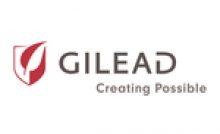Kyowa Kirin Receives Positive CHMP Opinion for Use of CRYSVITA� ?(burosumab) for the Treatment of Tumour-Induced Osteomalacia (TIO)


CRYSVITA could offer access to the first biologic treatment for EU patients with TIO who cannot undergo surgical removal of tumours
TOKYO–(BUSINESS WIRE)–Kyowa Kirin Co., Ltd. (TSE: 4151, Kyowa Kirin) today announced that the Committee for Medicinal Products for Human Use (CHMP) of the European Medicines Agency (EMA) has recommended that CRYSVITA� (burosumab) be approved for the treatment of FGF23-related hypophosphataemia in Tumour-Induced Osteomalacia (TIO) associated with phosphaturic mesenchymal tumours (PMTs) that cannot be curatively resected or localised in children and adolescents aged 1 to 17 years and in adults.1 CRYSVITA is also already licensed for use in the rare disease X-Linked Hypophosphataemia (XLH), for children and adolescents between 1 and 17 years of age with radiographic evidence of bone disease, and in adults.2
Also known as oncogenic osteomalacia, TIO is an acquired disorder caused by typically small, slow-growing, benign PMTs.3,4 It is a rare condition with less than 1000 cases reported in the medical literature,4 which mainly affects adults and with a mean onset age of 40 45 years.3,5 TIO is associated with progressive and debilitating musculoskeletal deficits,6,7 ultimately having a detrimental impact on ability to perform daily activities, as well as on physical and social wellbeing.8
A cure for TIO can be achieved with complete surgical resection of the causative tumour(s), however, surgical resection is not always possible due to the location and difficulty in detecting tumours.3,5 TIO may recur and persist following incomplete or unsuccessful surgical resection.9
If approved by the European Commission (EC), CRYSVITA will be the first biologic treatment available to European patients with TIO, which blocks the action of FGF23, restoring phosphate homeostasis.2,10
Being diagnosed with a rare condition, like TIO, does present many challenges for patients and treating physicians, including the diagnostic process and the current lack of specific therapies. The unmet need for people living with TIO is clear, so this positive CHMP opinion is a very important step forward for those who cannot be cured by tumour removal and for the healthcare professionals supporting them, said Professor Ralf Oheim, Department of Osteology and Biomechanics, University Medical Center Hamburg.
For people diagnosed with TIO in Europe, we are a step closer to being able to deliver the first biologic treatment for those who cannot undergo surgical removal of tumours, said Abdul Mullick, President of Kyowa Kirin International. This positive CHMP opinion is a much welcomed milestone for CRYSVITA, which is currently approved for use in Europe in adults and children with X-Linked Hypophosphataemia. Im proud that Kyowa Kirin International is helping those living with TIO, as part of our extensive work in supporting those with rare diseases gain access to life changing therapies for their diseases.
Administered by a subcutaneous injection, CRYSVITA is a recombinant fully human monoclonal antibody that binds to and inhibits the activity of FGF23, restoring phosphate homeostasis.2 The efficacy and safety of CRYSVITA have been demonstrated in two Phase II clinical trials published in the disease area of TIO.11,12 CRYSVITA has been approved for clinical use in X-Linked Hypophosphataemia (XLH) across the European Union (EU) and Great Britain (GB) since 2018, and in this indication is presently approved for use in children and adolescents aged 1 and 17 years of age with radiographic evidence of bone disease, and in adults.2
The EC will review the CHMP recommendation and a final decision on the expansion of the recommended use for CRYSVITA for the treatment of FGF23-related hypophosphataemia in TIO associated with phosphaturic mesenchymal tumours (PMTs) that cannot be curatively resected or localised in children and adolescents aged 1 to 17 years and in adults is expected in the coming months. This means that use of CRYSVITA in this TIO indication is not currently approved in the EU or GB.
?This medicinal product is subject to additional monitoring.
About Tumour-Induced Osteomalacia (TIO)
TIO is characterised by chronic hypophosphataemia caused by tumour(s) secreting excess fibroblast growth factor 23 (FGF23),3 which can lead to issues such as decreased intestinal phosphate absorption and compromised vitamin D activation.3,4
The most common signs and symptoms include bone pain, difficulty walking, pathological fractures, height loss and muscle weakness.6 In TIO, muscle weakness and pain severely interfere with physical functioning, including standing up without assistance, walking and ability to work.8 The pain in TIO also severely interferes with mood and moderately interferes with enjoyment of life for those living with it.8
TIO diagnosis is often missed and/or delayed and testing serum phosphate levels is important for diagnosis.3 The only cure in TIO is complete removal of the causative tumour(s).3 Pharmacological treatment should be considered in TIO cases where tumour(s) cannot be curatively resected or localised.3 Restoring phosphate homeostasis is essential to improve the health of people living with TIO.3
About CRYSVITA® (burosumab) in TIO
CRYSVITA (burosumab) was created and developed by Kyowa Kirin and is a recombinant fully human monoclonal antibody that binds to and inhibits the activity of FGF23.2 CRYSVITA blocks the action of FGF23, restoring phosphate homeostasis.2
The efficacy and safety of CRYSVITA have been demonstrated in two Phase 2 clinical trials published in the disease area of TIO.11,12 CRYSVITA was well-tolerated and demonstrated an acceptable safety profile.11,12
CRYSVITA is presently indicated for the treatment of XLH in children and adolescents aged 1 to 17 years with radiographic evidence of bone disease, and in adults.2 If approved by the European Commission, CRYSVITA would be indicated for the treatment of FGF23-related hypophosphataemia in TIO associated with PMTs that cannot be curatively resected or localised in children and adolescents aged 1 to 17 years and in adults.1 CRYSVITA is given as a subcutaneous injection, every 4 weeks in adults and every 2 weeks in children and adolescents aged 1 to 17 years.2
CRYSVITA is currently approved for use in the treatment of TIO in a number of countries, including the United States13 and Japan.14
Kyowa Kirin and Ultragenyx Pharmaceutical Inc. (NASDAQ: RARE: Ultragenyx) have been collaborating in the development and commercialisation of CRYSVITA globally, based on the collaboration and licence agreement between Kyowa Kirin and Ultragenyx.
About Kyowa Kirin
Kyowa Kirin strives to create and deliver novel medicines with life-changing value. As a Japan based global specialty pharmaceutical company with a heritage of more than 70 years, the company applies cutting-edge science, including expertise in antibody research and engineering, to address the needs of patients across multiple therapeutic areas such as nephrology, oncology, immunology/allergy and neurology. Across its four regions Japan, Asia Pacific, North America and EMEA/International Kyowa Kirin focuses on its purpose, to make people smile, and is united by its shared values of commitment to life, teamwork, innovation and integrity.
You can learn more about the business of Kyowa Kirin at: https://www.kyowakirin.com/
Kyowa Kirin International
http://www.international.kyowa-kirin.com / www.kyowakirin.com
Galabank Business Park
Galashiels, TD1 1QH
United Kingdom
References
1 European Medicines Agency. CRYSVITA TIO CHMP Opinion. Available at: https://www.ema.europa.eu/en/documents/smop/chmp-post-authorisation-summary-positive-opinion-crysvita-ii-23_en.pdf. Last updated: June 2022. Last accessed: June 2022.
2 Kyowa Kirin Limited. CRYSVITA (burosumab). Summary of Product Characteristics. 2021.
3 Brandi ML, et al. Challenges in the management of tumor-induced osteomalacia (TIO). Bone. 2021;152:1160-64.
4 Florenzano P, et al. Tumor-Induced Osteomalacia. Calcified Tissue International. 2021;108:128-42.
5 Dahir K, et al. Diagnosis and Management of Tumor-Induced Osteomalacia: Perspectives from Clinical Experience. Journal of the Endocrine Society. 2021;5:1-12.
6 Feng J, et al. The diagnostic dilemma of tumor induced osteomalacia: a retrospective analysis of 144 cases. Endocrine Journal. 2017;64:675-83.
7 Minisola S, et al. Tumour-induced osteomalacia. Nature Reviews Disease Primers. 2017 ;3 :17044.
8 Jerkovich F, et al. Burden of Disease in Patients with Tumor-Induced Osteomalacia. JBMR Plus. 2020;5:e10436.
9 Cianferotti L, et al. Persistence and recurrence in tumor-induced osteomalacia: A systematic review of the literature and results from a national survey/case series. Endocrine. 2022;76:709-721.
10 Oe Y, et al. Medicine (Baltimore). 2021;100:e27895.
11 Imanishi Y, et al. Interim Analysis of a Phase 2 Open-Label Trial Assessing Burosumab Efficacy and Safety in Patients with Tumor-Induced Osteomalacia. Journal of Bone and Mineral Research. 2021;36:262-70.
12 Jan de Beur S, et al. Burosumab for the Treatment of Tumor-Induced Osteomalacia. Journal of Bone and Mineral Research. 2021;36:627-35.
13 Kyowa Kirin. Ultragenyx and Kyowa Kirin Announce US FDA Approval of CRYSVITA (Burosumab) for the Treatment of Tumor-Induced Osteomalacia (TIO). 2020. Available at: https://www.kyowakirin.com/media_center/news_releases/2020/pdf/e20200619_01.pdf. Last Accessed: June 2022.
14 Kyowa Kirin. Kyowa Kirin Announces Approval of CRYSVITA (Burosumab) for the Treatment of FGF23-related Hypophosphatemic Rickets and Osteomalacia in Japan. Available at: https://www.kyowakirin.com/media_center/news_releases/2019/e20190920_01.html. Last Accessed: June 2022.
KKI/INT/BUR/1663
Date of preparation: June 2022
Contacts
Contacts for Kyowa Kirin Co., Ltd.:
Media
Hiroki Nakamura
+81-3-5205-7205
Email: media@kyowakirin.com
Contacts for Kyowa Kirin International:
Media
Stacey Minton
+44 (0) 7769 656073
Email: Stacey.Minton@kyowakirin.com
Recent Posts
ARROW expands presence in Vietnam with DASH support, bringing smart bathroom solutions to local consumers
Leading premium bathroom brand ARROW is expanding its presence in Vietnam, bringing a world-class living…
M&G LIFE Presents MR.PA Pop-Up at Jewel Changi Airport, Featuring Exclusive Launches and Interactive Fun
SINGAPORE - Media OutReach Newswire - 18 April 2025 - Creative lifestyle brand M&G LIFE…
Octa broker’s take on CBDCs vs. crypto: key insights for traders in 2025
KUALA LUMPUR, MALAYSIA - Media OutReach Newswire - 18 April 2025 - Central Bank Digital…
AIMS Group Announces Official Partnership with the World Trading Tournament (WTT)
— $2.75 Million Prize Pool & Grand Finale in Dubai Set to Redefine Global Trading…
Travelodge Launches Kyoto Shijo Omiya Hotel with Newly Renovated Design and Buy 1 Get 1 Promo
KYOTO, JAPAN - Media OutReach Newswire - 18 April 2025 - Travelodge Hotels Asia is…
Octa broker on graphical analysis: identifying potentially profitable trades with candlestick charts
KUALA LUMPUR, MALAYSIA - Media OutReach Newswire - 18 April 2025 - Trading success often…

